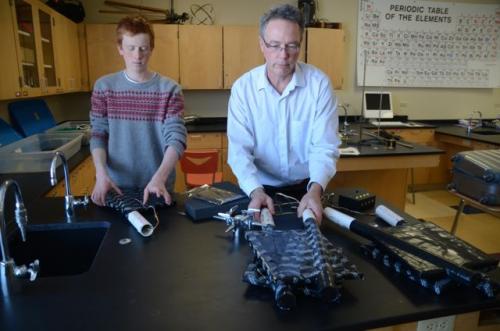Last thursday Jim Madsen, from IceCube, came to our school to help teach us more about the cosmic ray detectors and how they work. And help was what we definitely needed. The whole set up consisted of:
- 5 paddles
- 2 voltage distribution boxes
- 2 circuit boards
- 1 laptop
- 4 black cords
- GPS box
- GPS antenna
- temperature and barometric pressure probe
- black cord, green cord,white cord
- power source from a wall outlet
Here is quick video of the detector with Claire and Jim.
http://
All these components had to be carefully connected for the detector to work. The finished product looked like a tangle of wires and strange paddle looking things all connected in different spots. Many of the wires connected to a circuit board and than to a laptop. Once the setup had been completed we had to run a special program on the laptop that organized the data from the circuit board. The program counted how many particles each paddle was detecting. Our first order of operation was to ensure the detectors were working at their optimal level. To find out the optimal level for each of the detectors we had to slowly change the amount of voltage for each of the detectors. We would first record the initial count than the final count of each detector. Than we graphed the data on to excel. We looked for plateau's in the data. These are areas where the count rate of particles remained relatively constant, or their optimal levels. We had to continue this process for all four detectors.
 Luke working on the cosmic ray detector Jim Madsen, from the IceCube project.
Luke working on the cosmic ray detector Jim Madsen, from the IceCube project.
It was important for us to find this information out because when we are in Antarctica we will need to be able to set up the detectors and get the best data possible.


Comments